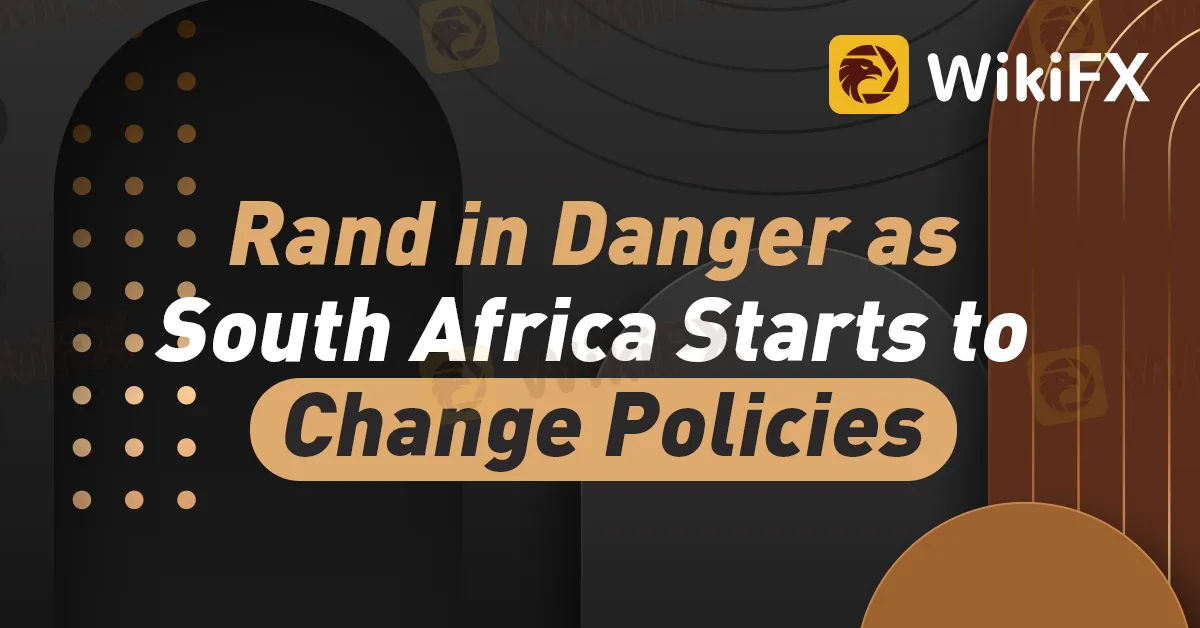简体中文
繁體中文
English
Pусский
日本語
ภาษาไทย
Tiếng Việt
Bahasa Indonesia
Español
हिन्दी
Filippiiniläinen
Français
Deutsch
Português
Türkçe
한국어
العربية
Rand in Danger as South Africa Starts to Change Policies
Abstract:The rand may become more volatile if the South African central bank changes how its monetary policy is carried out.

The rand may become more volatile if the South African central bank changes how its monetary policy is carried out.
Beginning on Wednesday night, the central bank will switch from its present deficit setup to a surplus one, allowing commercial banks to keep and earn interest on excess reserves. Similar to the “layered floor” system utilized by the Reserve Bank of New Zealand and the Norges Bank, the South African Reserve Bank will likewise implement measures to discourage banks from hoarding liquidity and so assist in maintaining an interbank money market.
The adjustment won't have an impact on the central bank's inflation objective or interest rate choices, but it may make it simpler to speculate in the rand, leading to greater price swings under pressure. Since the epidemic, the cost of shorting the South African rand has increased due to elevated ZAR-USD basis-swap rates.
The currency basis would decrease, making it more affordable to short the rand, said Michelle Wohlberg, a fixed-income analyst at Rand Merchant Bank located in Johannesburg. “Risk-off periods may become volatile as a result of this.”
The rand has been less volatile this year than a number of its peers, such as the lira, zloty, and real, despite pressure on risk assets brought on by fears about a slowdown in China, increasing global inflation, tighter policy, and Russia's conflict with Ukraine. The currency's historical correlation to the dollar has increased by 63 basis points to 14.66 percent, making it the fifth most volatile of the 23 developing-nation currencies tracked by Bloomberg.
The Reserve Bank stated that mitigating the risk would need “care and monitoring,” both during the transition to the new framework and in times of extreme market pressure, in a report that addressed worries about volatility. The first developing market economy to use the tiered-floor framework is South Africa.
It stated that the risk was considered to be “moderate” and did not pose a significant challenge to the idea of the new framework for implementing monetary policy. In contrast to mature nations that have floor-style systems, South Africa may experience the exchange rate differently due to its status as an emerging market.
According to the study, the central bank “has a lengthy track record of tolerating FX volatility” and inflation expectations are anchored, making them less vulnerable to exchange rate changes.

Disclaimer:
The views in this article only represent the author's personal views, and do not constitute investment advice on this platform. This platform does not guarantee the accuracy, completeness and timeliness of the information in the article, and will not be liable for any loss caused by the use of or reliance on the information in the article.
Read more

Gold Prices Fluctuate: What Really Determines Their Value?
Gold prices have been fluctuating recently, influenced by multiple factors. Since the beginning of 2025, gold has risen by 11%, hitting new historic highs multiple times in the first quarter.

Investors Beware! A Trillion Naira Wiped Out in a Week
Market takes a hit: a trillion naira wiped out—what happened?

Dollar Under Fire—Is More Decline Ahead?
The dollar faces its biggest decline of the year, strong-dollar logic challenged.

What Impact on Investors as Oil Prices Decline?
Oil prices have come under pressure amid mounting concerns over U.S. import tariffs and rising output from OPEC+ producers. With tariffs on key trading partners and supply increases dampening fuel demand expectations, investor appetite for riskier assets has cooled. This shift in sentiment poses a range of implications for different segments of the investment landscape.
WikiFX Broker
Latest News
Beware: Online Share Buying Scam Costs 2,791,780 PHP in Losses
5 things I wish someone could have told me before I chose a forex broker
Unmasking a RM24 Million Forex Scam in Malaysia
U.S., Germany, and Finland Shut Down Garantex Over Money Laundering Allegations
Gold Prices Fluctuate: What Really Determines Their Value?
Dollar Under Fire—Is More Decline Ahead?
What Impact on Investors as Oil Prices Decline?
Forex Trading: Scam or Real Opportunity?
The Hidden Tactics Brokers Use to Block Your Withdrawals
Is the North Korea's Lazarus Group the Biggest Crypto Hackers or Scapegoats?
Currency Calculator






